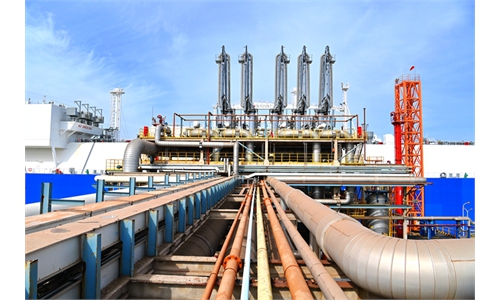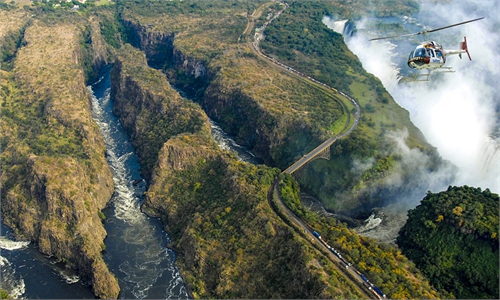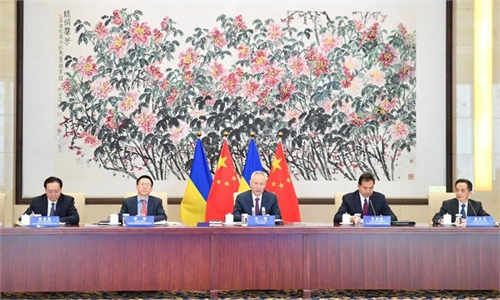Trade and infrastructure stay strong and defy pandemic
BRI strengthened by growing demand
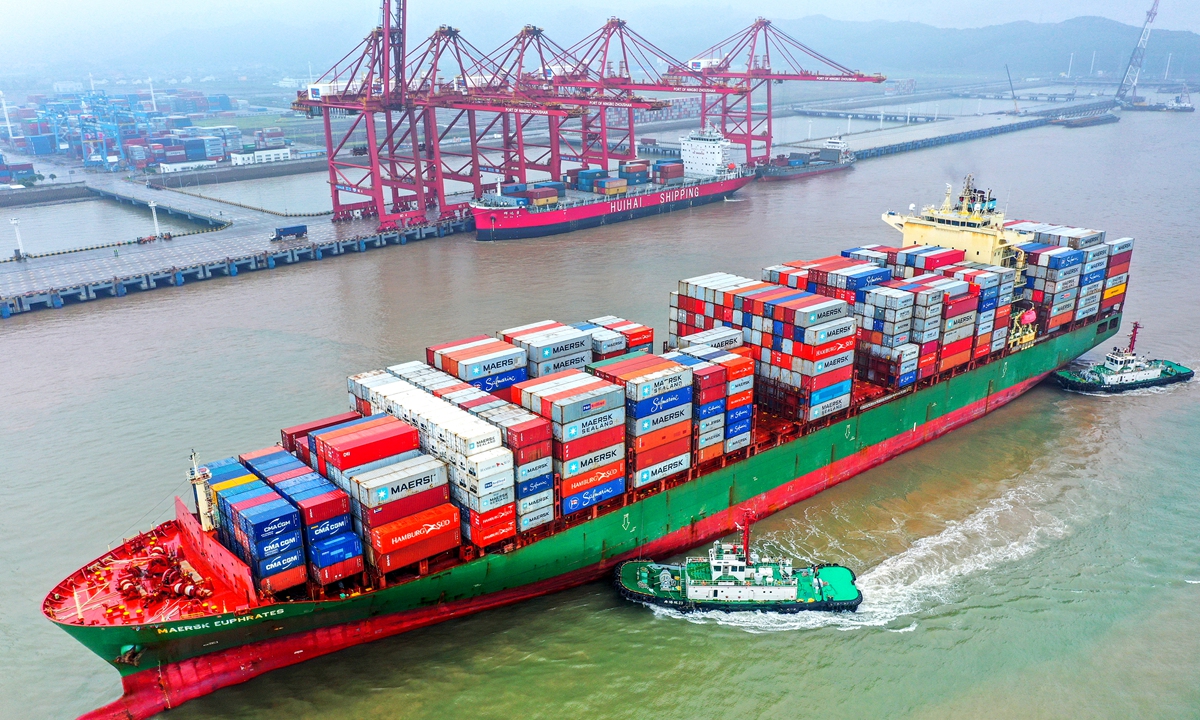
A Maersk ship makes berth in Dapukou terminal at Jintang port area of Ningbo Zhoushan port which runs 18 shipping routes covering the Belt and Road Initiative. Photo: cnsphoto
In the wake of global disruptions caused by the coronavirus, the unique role of China-proposed Belt and Road Initiative (BRI) in combating the virus and promoting economic recovery for countries along the route has been prominent and evidential, delivering shining results that smash some western slights against the initiative.
In a recently published annual report focused on the development of "The Belt and Road" construction, written by the Research Center for One Belt One Road Studies, Chinese Academy of Social Sciences (CASS), Chinese experts outline how the BRI countries achieve trade growth when much of the world was struggling to fend off extended economic lockdown.
While global trade has tumbled since the virus emerged, China's trade with BRI countries has been trending into positive territory. According to customs statistics, in 2020, China's total trade volume reached 32.16 trillion yuan ($4.97 trillion), an increase of 1.9 percent compared with 2019. Among them, China's imports and exports to countries along the BRI came into a 9.37 trillion yuan, an increase of 1 percent.
Trade along the BRI is substantive, thanks to China's effective virus suppression measurers which has made the country an important pillar for the stability for global supply chains as well as responding to the increasing demand for personal protective equipment (PPE), daily necessities and mechanic equipment, Zhang Zhongyuan, an associate research fellow with the National Institute of International Strategy of the CASS, told the Global Times on Thursday. These products served the needs of countries engaged in virus suppression while aiming for economic recovery.
Essential support
The reason for the boost in trade would not have been possible without China's focused efforts on providing the much-needed PPE such as masks, nucleic acid testing kits, ventilators and vaccines worldwide.
A Beijing-based mask producer surnamed Li told the Global Times on Thursday that his company has been exporting both surgical and K95 masks overseas in 2020, including those to the BRI countries.
Li said that his factory had expanded production capacity three-fold in responding to booming demand.
"We have exported tens of millions of masks since the coronavirus outbreak. Although export volume reduced by less than 10 percent in the first half of the year as the virus in many countries have been gradually under control, the current demand remains strong with new orders coming in," Li said.
In order to meet booming demand for PPE, China-Europe freight trains, the signature logistics lifeline of the BRI, has played a resilient role in bridging the life-channel to those in need.
Despite the global logistic hurdle posed by port congestion, the China-Europe freight train has remained resilient in being an international pillar bolstering supply lines. In 2020, China-Europe freight trains transported a total of 1.135 million TEUs of goods, fully assisting the resumption of work and production. Among them, 9.39 million items of PPE were included
Under the normalized prevention and control of the epidemic, the cross-border cargo trains will continue to play a key role in stabilizing the global supply chain, industry insiders have stated.
Zhang predicted that trade and investment for countries along the BRI will continue to boost throughout the year to an extent that exceed that of last year as the epidemic prevention enters a new norm and the world is in of an economic reset.
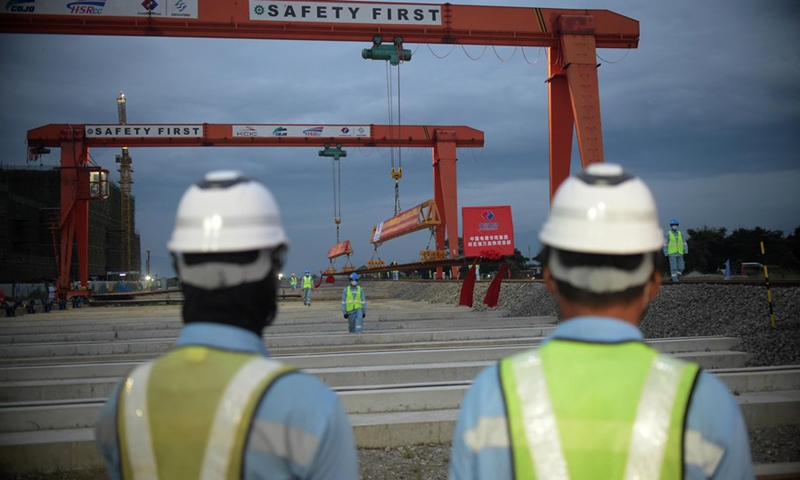
The first batch of 50-meter rails of the Jakarta-Bandung High Speed Railway are transported to the track-laying base of the Tegal Luar Electric Multiple Units (EMU) in the suburb of Bandung, West Java of Indonesia, April 7, 2021. (Photo: Xinhua)
Boosting economic recovery
While the epidemic items helped countries to accelerate its pace in epidemic prevention, China's investment in infrastructure in hard times enabled them to achieve economic recovery which is particularly on display in 2021.
From January to July 2021, China's foreign contracted engineering business completed a turnover of $78.51 billion, a year-on-year increase of 12.3 percent, and the value of newly signed contracts was $123.25 billion, a year-on-year increase of 1.2 percent, China News reported, citing Yu Xiaohong, the vice president of China International Contractors Association.
While challenges surrounding port congestion, personnel exchanges and regional instability have slowed progress for some overseas projects, experts said the impacts remained limited and controllable, because most of the projects are long-term investments in pursuing sustainable development and will not be impacted by short-term disruption.
Despite the lingering challenges, cooperation under the BRI has made marked progress.
On Tuesday, Chinese terminal operator COSCO Shipping Ports struck a deal with Container Terminal Tollerort for a deal involving the Port of Hamburg, Germany. The deal expected to promote the port's throughput and efficiency amid global transport disruption caused by the ongoing pandemic.
Other significant project includes the recent arrival of the final shipment of 6,600 tons of rail lines to the Jakarta-Bandung High Speed Railway at the Cilacap Port in Indonesia's Central Java province.
The arrival will push forward track laying work for the high-profile railway project and provides strong support for accelerating the construction, the Xinhua News Agency reported.
The annual report noted that new opportunities, such as the cooperation for the co-construction of some national digital facilities and new energy infrastructure will emerge, and represent new potential capacity under the BRI.
